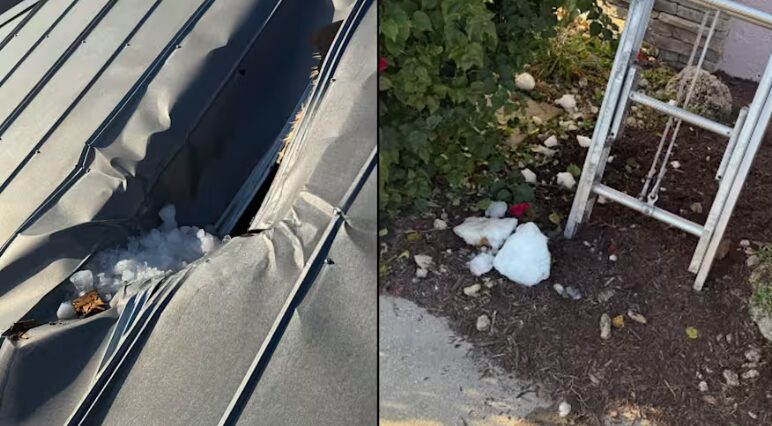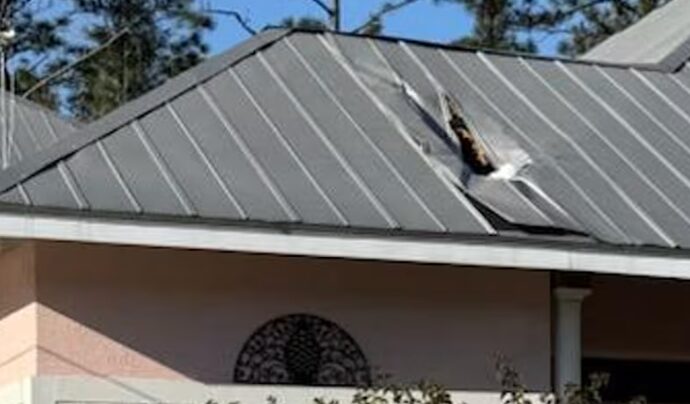Residents of the Seminole Woods neighborhood in Palm Coast were left baffled earlier this February when a massive ice block crashed from the sky, smashing into a home. The event, bizarre and unsettling, left many wondering where such a frozen projectile could have come from.
The Federal Aviation Administration (FAA) weighed in on the mystery, telling First Coast News on Monday that the icy mass was not from an airliner. That revelation, while ruling out commercial aircraft, only deepened the mystery—if not a plane, then what?
The incident occurred on February 3, when a startled neighbor dialed 911 to report large shards of ice scattered across the roadway. One particularly menacing chunk struck the house’s metal roof with enough force to punch through. By the time Palm Coast firefighters arrived, they found a gaping hole overhead and fragments of ice littering the living room.

Emergency responders immediately contacted both the FAA and the Palm Coast Building Department. After an inspection, officials determined the home was still safe to occupy—though a blue tarp was quickly stretched over the damage as a temporary fix. Thankfully, no injuries were reported, though the shaken homeowners opted to stay silent about their chilling ordeal.
To make sense of the skyborne ice assault, First Coast News turned to JP Dice, a corporate aircraft pilot and meteorologist. Dice offered several theories about the origins of the ice block, one being aircraft icing.
“Planes can accumulate ice under certain atmospheric conditions,” he explained. “When they descend or activate de-icing systems, that ice can suddenly break away.”
He also raised another possibility—a leak from an aircraft’s potable water system. If water seeped out and froze along the plane’s exterior, it could later dislodge and fall. The sheer size of the ice block suggested it likely came from a large aircraft—perhaps a military jet or an oversized corporate plane.
Though the FAA admitted that ice occasionally sheds from planes, Dice emphasized just how rare it is for such ice to actually strike a house.
“It’s about as likely as a meteorite crashing through your roof,” he said—a comparison that only added to the surreal nature of the event.
Looking at February’s weather data, Dice pointed out that while Florida may seem too warm for such an occurrence, atmospheric conditions at higher altitudes are another story.
“At 30,000 feet, temperatures can drop to minus 40 or even minus 50 degrees Celsius,” he noted.
So, while the precise origins of this frigid missile remain unknown, one thing is clear—the residents of Palm Coast won’t soon forget the day an ice block fell from the heavens.
Like this story? Read another one.

